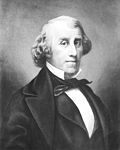Spring Street Courthouse

The Spring Street Courthouse, formerly the United States Court House in Downtown Los Angeles, is a Moderne style building that originally served as both a post office and a courthouse. The building was designed by Gilbert Stanley Underwood and Louis A. Simon, and construction was completed in 1940. It formerly housed federal courts but is now used by Los Angeles Superior Court. The United States Court House initially housed court facilities for the United States District Court for the Southern District of California, until the District was redrawn in 1966. It thereafter functioned as a court house with judges from the United States District Court for the Central District of California. There is another federal court house in the Roybal Building in Downtown Los Angeles. In February 2006, it was listed on the National Register of Historic Places as U.S. Court House and Post Office. It was designated a National Historic Landmark in 2012, as the site of Gonzalo Mendez et al v. Westminster School District of Orange County, et al, a major legal case in advancing the civil rights of Mexican-Americans, and a precursor to the landmark Brown v. Board of Education case.
Excerpt from the Wikipedia article Spring Street Courthouse (License: CC BY-SA 3.0, Authors, Images).Spring Street Courthouse
North Spring Street, Los Angeles Downtown
Geographical coordinates (GPS) Address Website Nearby Places Show on map
Geographical coordinates (GPS)
| Latitude | Longitude |
|---|---|
| N 34.055 ° | E -118.2414 ° |
Address
Spring Street Courthouse (U.S. District Court - Central California Western Division - Spring Street Courthouse)
North Spring Street 312
90012 Los Angeles, Downtown
California, United States
Open on Google Maps







